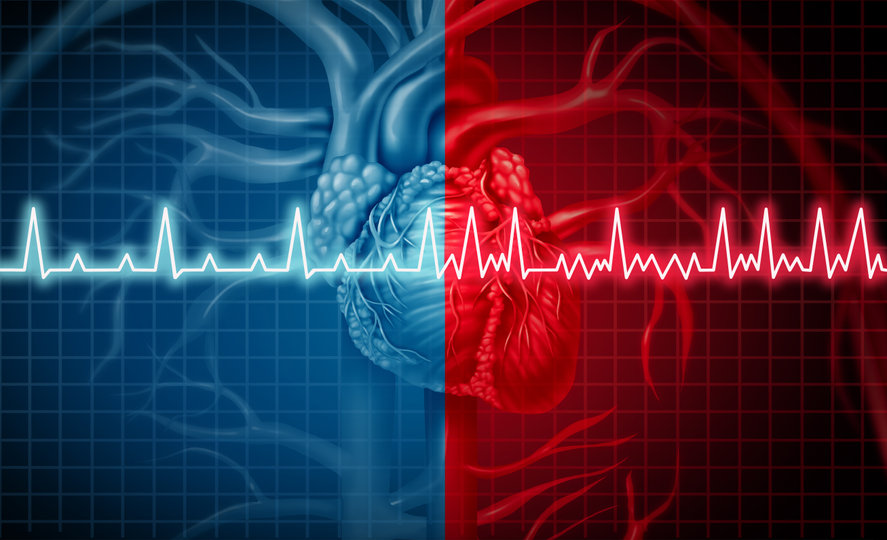
Why children are not small adults
17th August 2021
Why transparency of information is important
2nd September 2021Atrial Fibrillation is a heart condition that can cause the heart rate to become irregular and abnormally fast. When Atrial Fibrillation occurs, patients can quickly start to feel dizzy and may experience shortness of breath or tiredness. Atrial Fibrillation can quickly become dangerous and is considered an emergency if it lasts for more than 24 hours or if symptoms continue to worsen over time. Each year, Atrial Fibrillation will cause over 750,000 hospitalisations meaning that is it an issue all Emergency Medicine doctors and nurses should know how to manage. This article will guide you through how to manage Atrial Fibrillation in the emergency department.
Managing Atrial Fibrillation in the ER
If a patient comes into the emergency department with Atrial Fibrillation, it is important that their symptoms are relieved as soon as possible. If left untreated, can lead to strokes and even heart failure. With thousands of patients coming into hospitals with Atrial Fibrillation each year, it is important that you know exactly how to manage the situation quickly and effectively.
Making a diagnosis
Before starting any formal treatment, you must check that what the patient is experiencing is definitely atrial fibrillation. A fast heart rate is a symptom of many illnesses so, it is always best to make sure that you know exactly what you’re dealing with. The quickest way to check for atrial fibrillation in the ER is to check the patient’s pulse. Hold out their left arm with the palm of their hand facing up and their elbow slightly bent. Firmly place your index finger onto their wrist and count how many heartbeats you feel per minute. You should also notice any irregular beating. If the heartbeat is irregular and above 90 beats per minute, this is fast atrial fibrillation.
Atrial fibrillation treatment
The treatment of atrial fibrillation in the Emergency Department depends on the length of time the patient has been in Atrial Fibrillation and whether they look well or ill with a rapid irregular pulse.
Like many other patients on the Emergency Department the initial treatment of such a patient is to use the ABCDE method of managing their airway Breathing and circulation.
If there are adverse features such as shock, hearty failure or syncope then using a synchonised DC shock is the first line of treatment and seeking expert cardiological help regarding second line treatment that in these circumstances is usually Amiodorone.
Even if the patient looks well but has a definite onset of the atrial fibrillation of less than 48 hours again early discussion with the cardiology team who may recommend shocking the patient.
If the onset time is unknown or definitely longer than 48 hours the initial treatment is to control the ventricular rate either with a beta-blocker such as Bisoprolol or a calcium channel blocker such as Verapamil or Diltiazem according to local preferences by the cardiologists
All of these medications provide rapid rate control and are effective both during rest and periods of exercise for patients with atrial fibrillation.
If the rate is well controlled and there is no evidence of heart failure the patient can be discharged with appropriate follow up. If there rate remains high or they have evidence of heart failure then admission for more rigorous monitoring may be required.
Anticoagulation therapy
As mentioned earlier one of the serious consequences of having an abnormal heart rhythm is the risk of small; blood clots developing in the atria and then embolising into the circulation specifically into the cerebral circulation and causing strokes
The risk of this in a patient with Atrial Fibrillation is calculated by using the CHA2DS2-Vasc Score. If the score is more than 1 then patients should be offered anticoagulation therapy after cardiological consultation probably using a NOAC such as Apixaban or Rivaroxaban.
Summary
Atrial Fibrillation is a common presentation to the Emergency Department and knowing both what the risks are and the first line treatment before asking for help is important for the Emergency Medicine doctors to be aware of.
Not understanding the risks of this condition and its potential complications can lead to patients with this condition not being given optimal care or appropriate follow-up.




